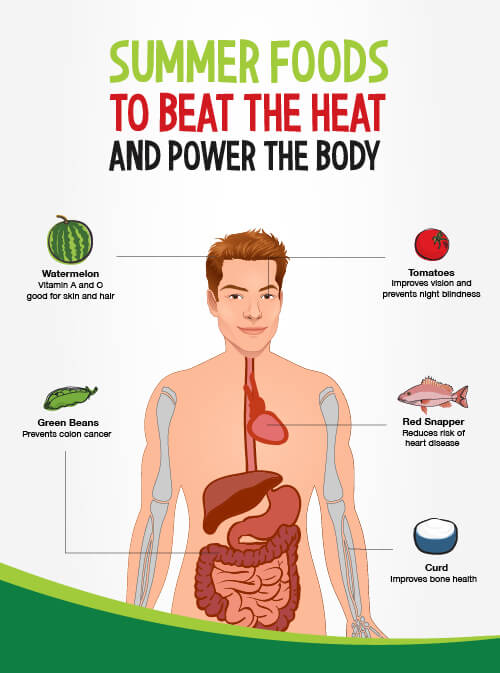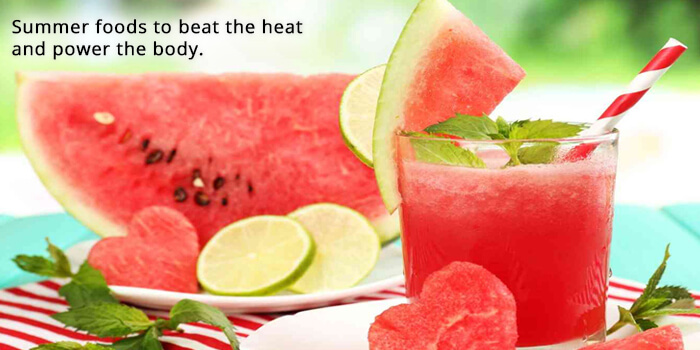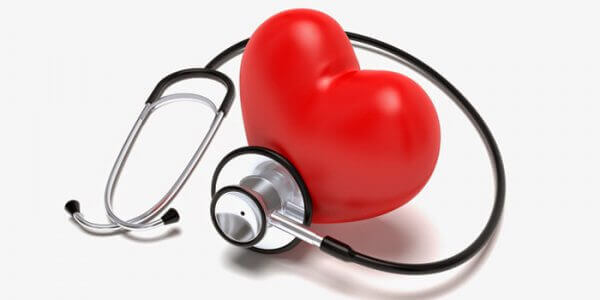Is there a need for home healthcare in India?
IHHC Summer Foods Series: Part 1
Watermelon With about 92 percent of its weight coming from water, watermelon contributes to the body’s fluid intake – very important during the hot Indian summer. The inflammation-fighting antioxidants in watermelon are credited with reducing the risks of complications from diabetes, cardiovascular disease, cancer and arthritis.

Watermelon is also high in vitamins C and A, and the antioxidant lycopene, known for reducing the risk of macular degeneration and prostate cancer. The potassium in watermelon helps muscle and nerve function, regulates the body's electrolyte and acid-base balance, and reduces the risks of high blood pressure.
Refreshing, tasty, and hydrating, watermelon provides the vital nutrition and flavours we need and enjoy – especially when the days are long and sizzling. Watermelons come in different shapes and sizes, with thick green rinds that are spotted or striped or just plain olive.
Tomatoes
Available in a variety of shapes and sizes, tomatoes make a nutritious and delicious addition to any meal. The tomato provides multiple health benefits -- especially in reducing the risks of complications from diabetes and cardiovascular disease. Tomatoes also contain folate.
Low in calories (1 cup has only 32 calories and 7 grams of carbs), tomatoes are an important source of vitamin C and A as well as vitamin K -- important for bone health. Other vital nutrients include lycopene, potassium, vitamin B6, folate, dietary fibre, manganese, magnesium, niacin, and vitamin E. All these work together to promote overall good health.
Red Snapper
The omega-3 fatty acids in the Red Snapper helps to stabilize blood pressure and keep the heart healthy. Red Snappers also promote white blood cell production and regulate the thyroid gland. Red snappers contain antioxidants that fight DNA damage to keep the body from getting sick. This fish is a great source of heart-healthy omega-3 fatty acids, boasting more than 100 mg in just one ounce. Though it’s loaded with fats, it's still a lean choice compared to most meats, with a three-ounce portion being just 90 calories. The Red Snapper is also high in vitamin B12, which helps maintain a healthy nervous system.
The Red Snapper is a healthy, low-calorie option for summer grilling and sautéing or cooking in a light curry. It has a subtle sweet flavour, with a firm texture. Avoid overcooking this firm yet delicate fish.
Green Beans
Whether you know it or not, green beans are a power food - with antioxidants such as lutein and beta-carotene, their nutritional value is comparable to other brightly coloured vegetables. They are an excellent source of vitamin C and vitamin A, as well as bone-building vitamin K.
The fibre content in green beans is very high, and they provide some of our daily protein requirements, while also acting as an easy source for acquiring vitamins such as vitamin A, C, K, B6, and folic acid. As for minerals, green beans are a good source of calcium, silicon, iron, manganese, potassium, and copper.
One cup of green beans has only 44 calories and 10 grams of carbs, while providing about four grams of fibre -- important for digestion and glucose control. Green beans make a wonderful low-calorie addition to any meal, whether stir-fried, steamed, or in salads – especially in the hot days of summer.
Curd
This wonderful by-product of milk has a number of health and nutritional benefits – more so in summer! Eating curd every day helps the body to stay cool, improves the digestive system, and helps to get manage stomach problems. Curd is delicious and also has a cooling effect on the body. Curd can be consumed in different variants: spicy buttermilk, sweet lassi or tasty curd-rice. You can also make raita and eat it with your meals. Another option is to eat curd by adding seasonal fruits to it or by making lip-smacking smoothies. By making curd a part of your everyday diet you will be adding to your body’s range of power weapons to fight the summer heat.




